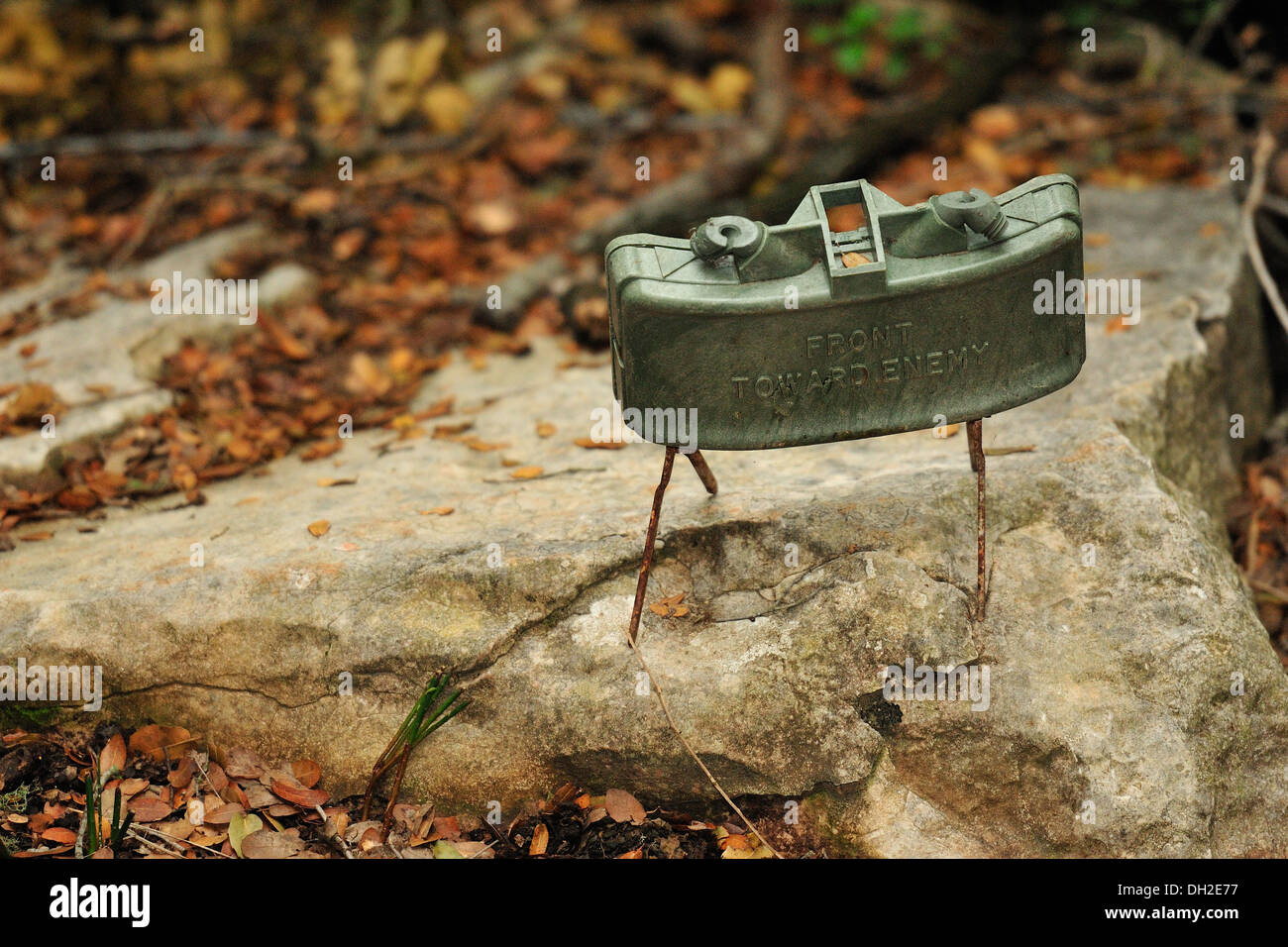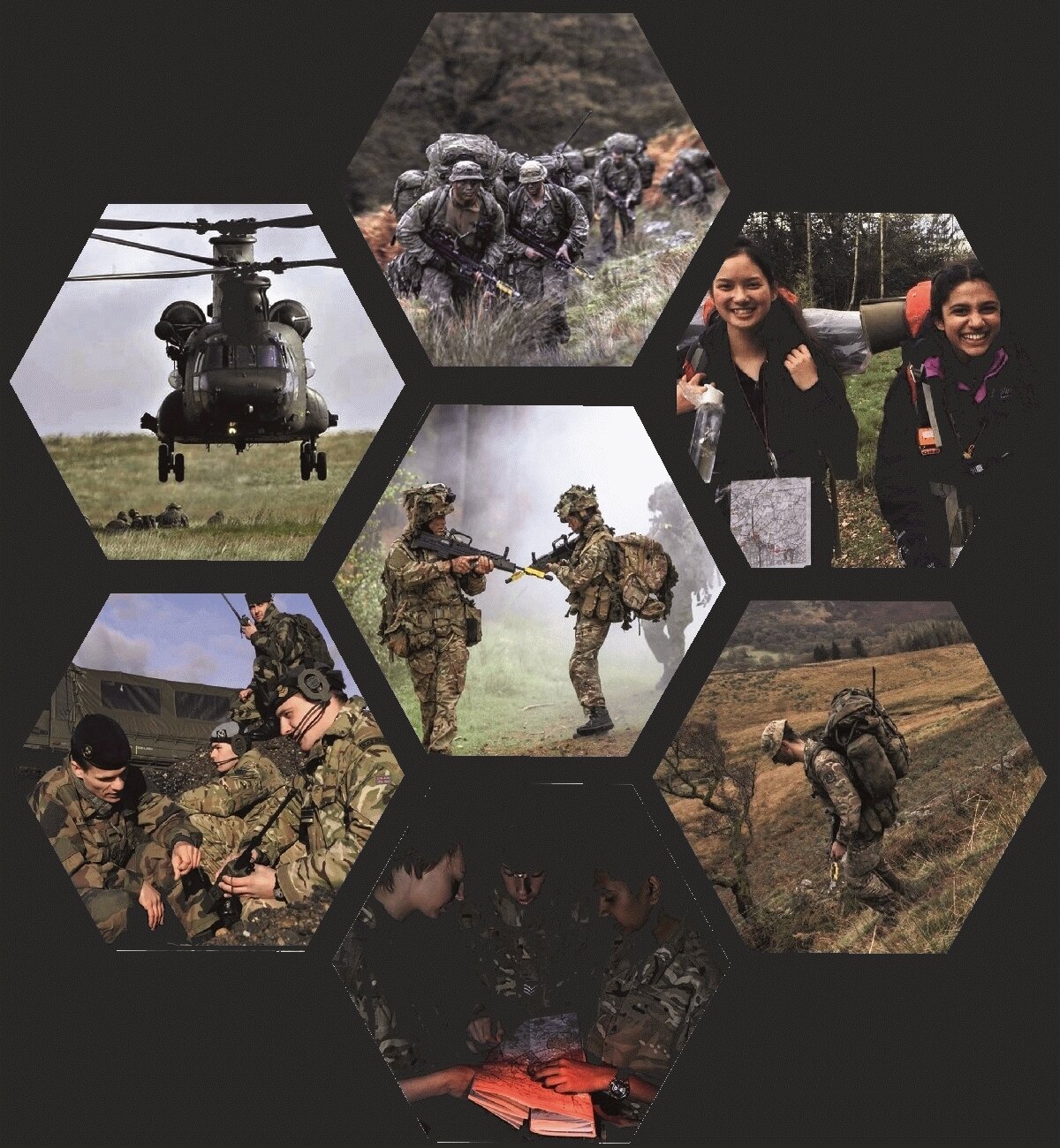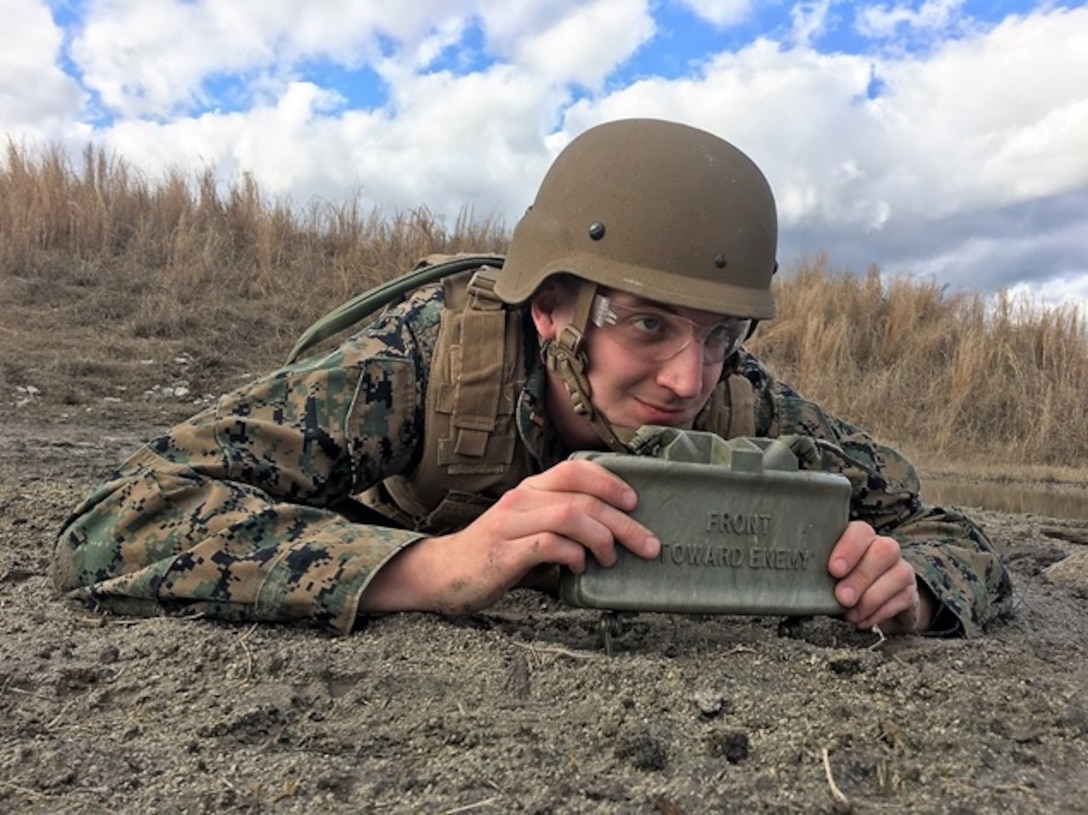Claymore Military - Claymore is perhaps the most famous mine of the late 20th century. It made a name for itself during the Vietnam War, using it to ambush and ambush US forces. Over the years it has been noted by allies and enemies alike, and many copies have been issued, remaining literally effective tools for crushing opposition.
Unlike conventional landmines, which direct their explosives upwards; Claymore is called a "path mine". This means that the user points the mine visually from above and stabilizes it with two scissor-like anchors that can be pressed into the ground or stand independently. The safety gap was then removed to return the wire to the user's position and the detonator was in the form of a noodle to initiate the explosion.
Claymore Military

The claymore is rectangular in shape and once fired, the plastic explosives throw 700 steel balls in a 60° radius. Any contact within 50 yards is fatal. The closer you get to the explosion the more intense it gets. This action is like dozens of guns going off at once. There is nothing like that on the battlefield.
Isometric Military Mine Icon Isolated On Orange Background. Claymore Mine Explosive Device. Anti Personnel Mine Stock Vector
Claymore's appearance is known worldwide. In addition to its physical appearance, it is made of green plastic and features the famous words "Lead Forward" in large letters, reminding the user of the business end. In this way, it was guaranteed that there would be no more mistakes, and the mine that came out from behind the Scottish claymore sword that cut down the enemy would live up to its name.
Before you go claymore, you need to find a specific concept. It was pioneered in World War II by Hungarian and German scientists who believed that an explosive device with a heavy backing such as a steel plate could transfer most of its energy to the front, with significantly less risk behind it. They search on their own; Dubbed the Misznay-Schardin effect, the rest of the war mines tried to perfect it by creating different mines, such as antitank and trench versions, and promised the effect. However, the theory was shelved as the war ended.
It ended with the Korean War when the Chinese attacked in massive human waves that sometimes overran Allied positions. Traditional mines help, but they take a long time to farm and units need something efficient and fast. Later, designs for a solution began to take shape in the United States and Canada.
Canada was the first country to experiment with the Miesznay-Chardin effect with a large mine supported by Composition B, which removes blocks of steel. Known as 'Phoenix'; This proved problematic and impractical due to its size. At the same time, a similar design, smaller in size, was developed in the US, and eventually the working direction came to mine.
M18 Claymore Ap Mine, Clacker And Test Unit (replica)
Does he use Phoenix for inspiration? Or that was his original idea, is unknown. However, Norman McLeod, head of the Explosives Research Corporation, prevailed. He developed a small curved or curved mine called the T-48 and tested it for the US Army. Tests confirmed the mine's lethality, and it was quickly adopted as the M18 claymore.
10,000 of them faced problems until 1954, when officials felt that improvements could be made in many areas. Picatinney Arsenal then issued a request to modify the M18 as follows.
Designers worked to meet demand and produced the M18A1. It corrected all of the M18's shortcomings, doubled the effective range, and fixed reliability issues to set the standard for future mines. To confirm this, hundreds of thousands were sent to Vietnam, where it was essential. There, it was not only useful, but it was presented as a war winner.

Attacks by numerous NVA and Viet Cong located around the base were repulsed as they attempted to cut the wire. In many cases, this was what stood between survival and overpowering the many American or South Vietnamese soldiers who owed their lives to Claymore. Claymores in the jungle were seen starting or ending ambushes, and were widely escorted by special forces, who deployed several men in a circle to defend the position while they slept. They were often planted on the ground to improve the vertical spread of the explosion. Claymore's uses seem to be limited by a soldier's imagination when it comes to how to use them.
U.s. Army Is Set To Buy More Anti Personnel Mines
As of today, almost all soldiers loved and still use remote controls or clickers. Tripwires and timers are usually only available to special forces and are rare. Remote control provides an element of safety to human minded decision making.
The M18A1 Claymore remains widely deployed, as do the Russian-made MON-50 and the Serbian MRUD. Recently, an American company called Mini-More Arms Tech Ltd. A smaller variant produced by the , this mine is about a third the size and weight of its cousin and is currently deployed with special forces.
1 Death of a Deserter: Former US Navy SEAL Killed in Ukraine 2 Here's Why Dark Humor Memes Are So Important 3 Modern Tanks for Ukraine: How to Respond Effectively to Russia 4 US Agrees to send M1 Abrams tanks to Ukraine, but pledges 5 billion by Ukrainian side; Why the neglect of Myanmar?
Adam Brown: The Complete List of Seal Courage and Redemption: Ticonderoga-class missile cruisers to retire in 2027, wipe out a dying Russian rifle brigade in India, Russian sausage billionaires and criticism of Putin nearly sparks World War III. 'During the war in Ukraine
Macroswiss Claymore Camera Makes A Dumb Mine Much Smarter
RecPak supports your weight in the toughest environments. An outdoor meal that saves space and time, just add water.
Presidus pays homage to the tradition of military watches. Discover the heritage of today's military era with strong designs and vintage classic styles. This article requires additional citations for verification. Please help improve this article by adding references to reliable sources. Unsourced content can be challenged and removed. Find sources: "MON-50" – News · Newspapers · Books · Scholars · JSTOR (October 2017 ) (Learn how to remove this sample message)
A non-armored MON-50 from the Swedish Army EOD and Demining Ctre reads "К ПРОТИВНИКУ" (k protivniku, "towards emy").
The MON-50 (Russian: МОН-50) is a Soviet rectangular; A type of guided mine designed to injure or kill by slightly concave plastic body explosive fragmentation. It first entered service in 1965 and is a copy of the American M18 Claymore with a few differences.
Operation Claymore Hi Res Stock Photography And Images
This section does not cite any sources. Please help improve this section by adding references to reliable sources. Unsourced content can be challenged and removed. (December 2022) (Learn how to remove this sample message)
Based on the American M18A1 Claymore, the MON-50 features folding scissor-type legs for support and aiming. However, wood has an attachment point at the bottom for attaching a special clamp/spike which can be attached to metal etc. A sharp sight at the top flanked by two blast holes. The mine consists of 700 grams of RDX (PVV-5A) that propels approximately 540 or 485 fragments in a 54° arc (50 meters by 45 meters) to a lethal distance. Depending on the type, the pieces can be steel balls (540) or short steel rods (485).
The MON-50 is normally commanded using a PN manual inductor and an EDP-R electric detonator. Also works with a variety of booby trap (BT) switches, including the MUV series draw. MVE-72 Electric Cutter; or VP13 Seismic Controller.
MON-50 is typically installed above ground level or in trees to optimize particle dispersion. It is waterproof and can operate effectively from +50 to −50 °C (it can be buried in snow if it is no more than 10 cm in front of the mine, which greatly reduces its effectiveness).
Us M18a1 Claymore Antipersonnel Mine
Mine can be located visually or with a metal detector in most areas. Depending on its actuation method, the MON-50 can withstand the blast pressure of high-explosive detonation systems such as the Giant Viper and the M58 MICLIC.
Also for production in Russia and export to Bulgaria. Canada MON-50 is widely used in many parts of the world. It comes with two pocket cloths that hold all the parts to secure and command mine. common fuse; A VKPM-2 set of four mines can be included with the control panel and wiring.
Mines are subject to normal or advanced earthquakes. It is usually command actuated (always protected command wire). The MON-50 is known for use with the VP13 seismic controller, which promotes a closer approach to clearance operations.

Claymore fan, watch claymore, claymore streaming, claymore mine, rog claymore, claymore lantern, claymore hitch, claymore, claymore nerf, manga claymore, claymore anime, claymore headlamp

0 Comments